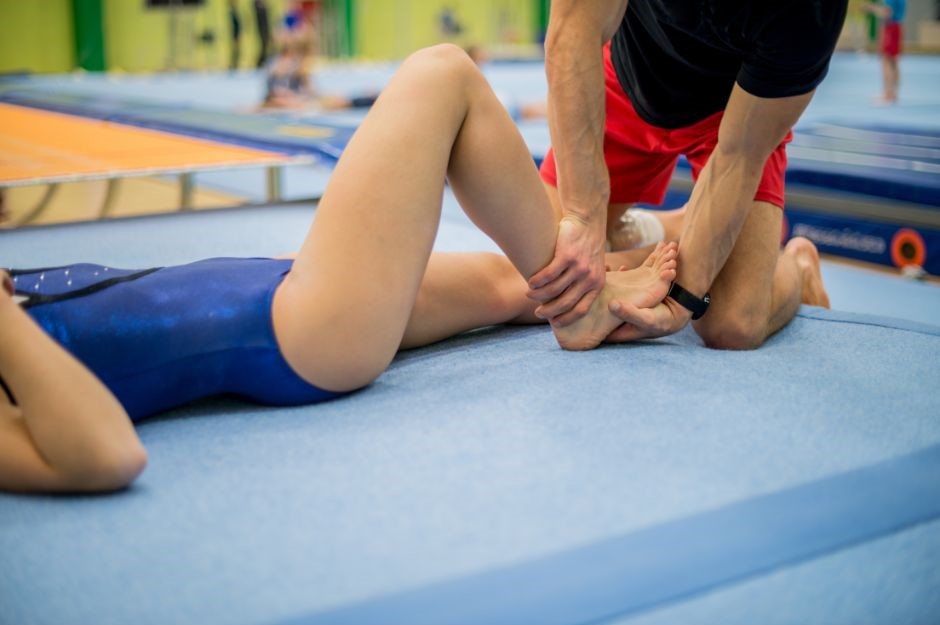
Gymnastics Medicine physical therapist Dr. Kaysha Bates with ankle strengthening exercises for the gymnast
In gymnastics, the ankle is the most commonly injured body part. Ankle instability and ankle sprains are seemingly simple injuries, but I have seen many athletes struggle for a long time to return to full strength and full training capacity after such injuries.
There are many excellent exercises to use for ankle sprains and ankle instability but here are some basic ones I like to start with.
Gastroc/Soleus Stretch: This begins to work on range of motion and flexibility of the involved tissues. Even in the case of an “unstable ankle” there is likely still soft tissue limitations that need to be addressed and then followed up by stability work (coming below). The first stretch is with the back leg straight (gastroc) and the second is with the back knee bent (soleus). Hold each one for 2 x 30sec.
Ankle eversion: This starts working on stability and control of the injured tissues in a non-weight bearing position. Is often very shaky to start out with and should be done very slowly and in a controlled fashion. With the band looped around the injured ankle slowly rotate the foot outward.
Single leg and seated heel raises: These exercises begins to work on the strength of the ankle, focusing on both the gastroc and soleus muscles. Go slow as you raise up onto the toes and then slowly lower back down.
Star balance: Not only does this exercise focus on balance but also works on the neuromuscular control of the lower extremity. Standing on a slightly bent knee, with control lower forward to touch each cone/cube.
I typically begin with the above exercises. Once normal range of motion, walking, and basic balance/stability have been achieved, it’s time to start challenging the gymnast by introducing more challenging exercises and some light plyometrics.
High Toe Marches: these begin to challenge the stability of the ankle in end ranges (important for gymnasts) while the weight adds an external balance component. With the weight in the opposite hand, march high on toe pausing with each step.
Heel Taps w/ Foam: this works some strength but the foam forces the athletes to learn to create stability in the ankle, knee, and hip. Standing on an uneven surface (ideally the foam pad would be flat) bend the knee towards the floor keeping the knee in line with the second toe and the hips level
Single Leg Deadlift: while this works strength of the posterior chain, it is also an excellent single leg exercise for stability at the ankle. Keeping the heel, hips, and shoulders all in one straight line, slowly lower forward. The bottom knee should be bent and as you reach the bottom, sit back into your hips.
Skater Jumps w/ 1/4 Turn: this exercise introduces some plyometric work and turning adds an extra challenge. The athlete should be working through their feet, pushing off the ground and landing softly. Very similar to a normal skater jump, just add a ¼ or ½ turn to challenge the landing position more.
Hurdle Hops to Rebound: Ideally done with a cone, this exercise is great for working single leg stability and jumping. Start by just doing a forward hop to stick. Then progress to a forward hop to rebound.
Good Luck!
Dr. Kaysha Bates DPT is a physical therapist based in Jackson Hole, WY